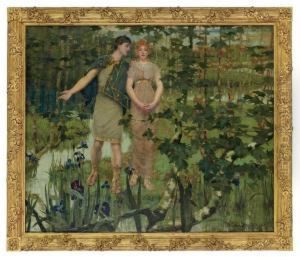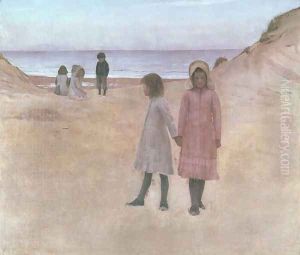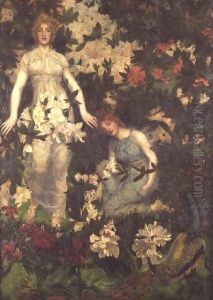William Stott Paintings
William Stott was born in Oldham, Lancashire, England, into a family of cotton mill owners. From a young age, he showed an aptitude for art, prompting his family to support his artistic education. He initially studied at the Oldham School of Art before moving to London to continue his studies at the South Kensington School of Art. Stott's ambition and talent led him to Paris, where he enrolled in the atelier of Jean-Léon Gérôme, a prominent figure in the French academic painting tradition. However, Stott's style and artistic preferences evolved as he became absorbed in the more progressive art circles of Paris.
During his time in France, Stott was heavily influenced by the Impressionists and the plein air method of painting, which emphasized outdoor scenes painted with a sense of immediacy and natural light. This marked a significant departure from the more rigid and formal academic painting he had initially been trained in. His work began to reflect a softer, more atmospheric quality, with a particular focus on landscapes and scenes of rural life.
One of Stott's most recognized works, 'Le Passeur' (The Ferryman), was exhibited in the Paris Salon of 1882 and is considered a masterpiece of British Impressionism. The painting demonstrates Stott's skill in capturing light and atmosphere, showcasing a delicate, evocative scene that was highly praised by critics and fellow artists alike.
Despite his success in France, Stott returned to England in the late 1880s, where he continued to work and exhibit his paintings. He became a significant figure in the British art scene, contributing to the spread of Impressionist techniques and ideas within British painting. Unfortunately, William Stott's life was cut short when he died unexpectedly in 1900 at the age of 43. His legacy, however, endures through his contributions to the development of British Impressionism and his influence on subsequent generations of artists. Stott's work is represented in many public collections, including the Tate Gallery in London, which highlights the enduring appreciation for his contribution to the art world.
















